
…is how Walter Schutz introduced his collection of childhood rememberances. We heard from a number of you that you’d like to read more his stories from Christmas in the early 1900’s (and more). This, then is a continuation of our Sievers Facebook posts since the last Sievers News was sent out. We’ll do one more focused on New Year’s festivities closer to that time.
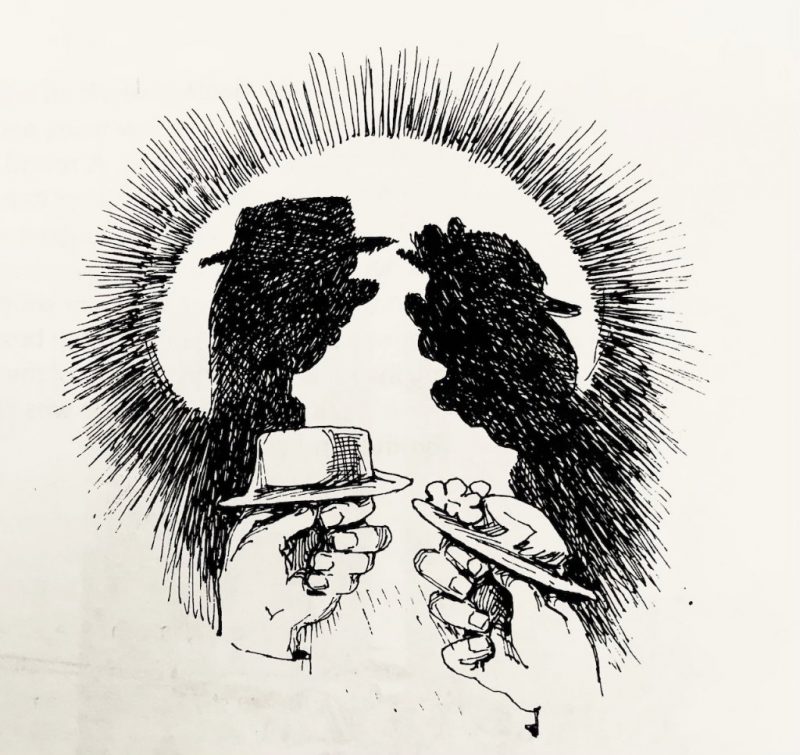
Walter continues, “A magic set was another favored gift. My brother had taken me to see several matinees at the Bijou where Thurston the Magician was playing. They were amazing and almost frightening experiences and never forgotten. It was only natural that I should try some of the most simple that were shown in a leaflet given away at the show. To get a professional box of tricks was tops. There were card tricks, disappearing marbles, a little turned wooden vase and one with which I could turn wheat kernels into flour.” (At age 89, he noted he still had most of these tricks in an old battered paper box.) “Thurston also did magic images on a screen. I found a book at the library and in a short time, I added these to my show, as I called it.”

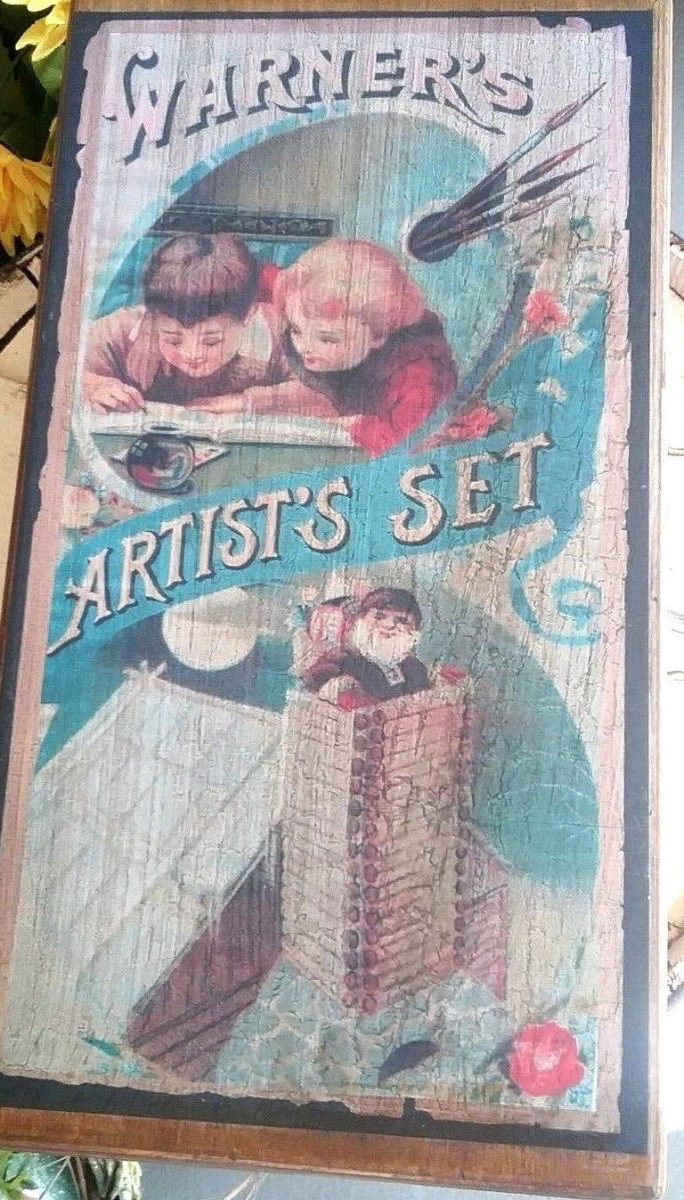
“When I was six or seven years old”, Walter writes, “Santa brought me an art and drawing set. It consisted of watercolors, colored crayons and paper stencils through which I could trace lines onto a sheet of paper. The paper supplied was in various colors and surface textures. The set came in a wooden box with highly decorated paper glued to the outside. This was a treasured gift.”

“Another very valued gift was books. I had a nice collection of Horatio Alger books and the Rover Boys and Frank Merriwell. Some of them have been read and reread perhaps a dozen times during the many years I had them. I gave all of these books to my older son and his children enjoyed reading them. In addition, I had Grimm’s Fairy Tales, a Mother Goose book and a book of poems beautifully bound with padded red leather; all of which were carefully handled and had a special place in my part of the bookshelf in our living room.”
Note: The photos here are not from Walter’s book, but are examples of his childhood gifts ca. 1910.

Walter continues, “Another year Santa gave me an actual shooting cannon. I still have it today (1989). A round pencil eraser is used as the projectile. It is breach-loaded with a paper cap. The breach block is pulled back, the cap inserted, and releasing a trigger spring explodes the cap and shoots the eraser with quite some force and accuracy. The same year my sister, who was working in a millinery shop, bought several large tree ornaments out of her meager earnings. My brother could not resist the temptation to try the rubber projectile on two of the ornaments. He was successful and for a week or so, I think there was little communication between my brother and sister.”
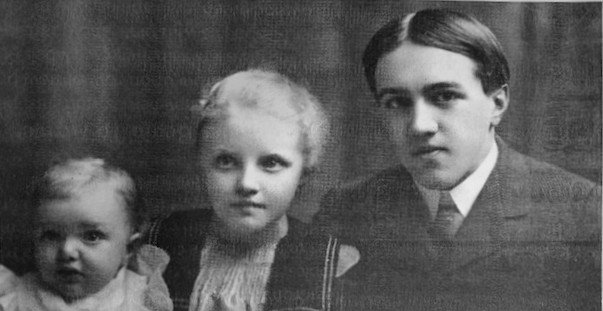
From this photo, you can see that there was a big age gap in the family. When Walter was born, his brother was 15 and his sister was 9. So you see, he was a keen observer of his older siblings’ relationship as a very young boy.
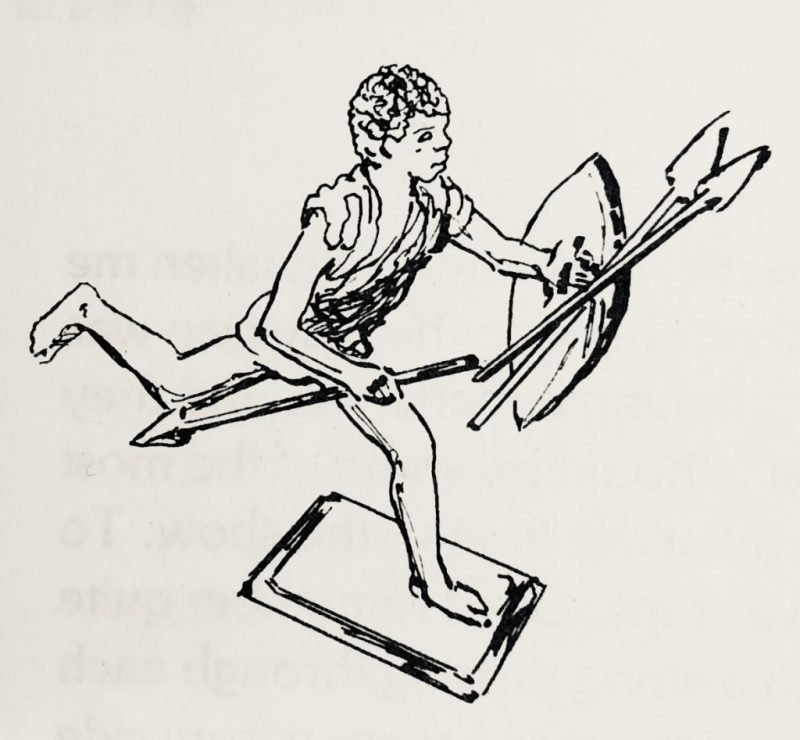
“I had a fairly good-sized army of toy tin soldiers imported from Germany. Most were U.S. soldiers wearing a dark blue jacket and light blue trousers. Some of them had a right arm that could be swung and they carried a pistol, sword or sabre. There was a small spring-operated cannon that came with the set and could shoot pieces of matchstick. They fought such thrilling battles in the wood forts I made and in the cardboard village that Santa brought one Christmas. Years later I bought aluminum molds and cast thousands of these figures. I also had a complete set of Zulu warriors that I treated more as an ornament than something to play with. Again, their right arms could be swung around. All of these were extremely accurate in detail and expertly painted. Eighty years later, I had the Zulus in the same box in which I received them with drippings of the tree candles on it.”
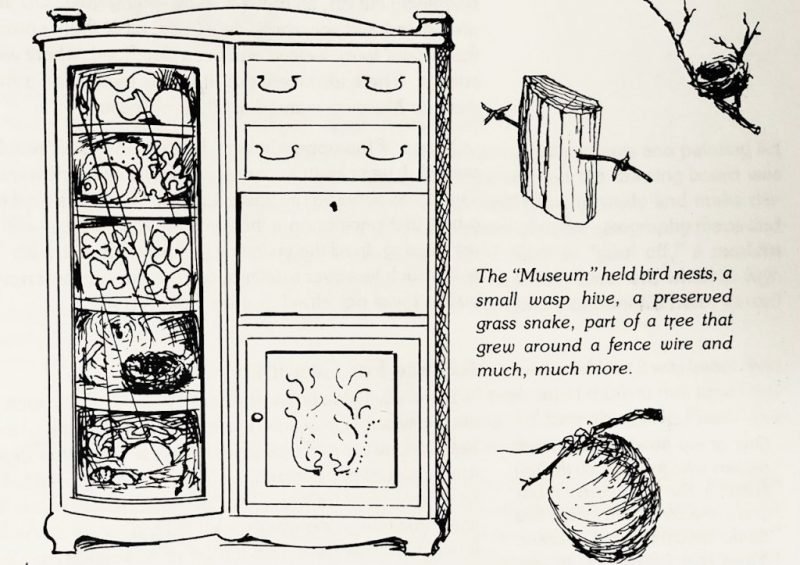
“My Private Kingdom” is what Walter called his third floor room with complete privacy and no supervision. “A bright Welsbach gaslight provided excellent illumination. It also had a speaking tube connected to the downstairs with a built-in whistle, and I can still hear the sharp penetrating sound as my mother called me to get up in time for school.”
“Most important was that EVERYTHING in that room belonged to me. Everything a young boy would want to collect was there, from a garter snake preserved in alcohol, to rock, seashell, stamp and cigar band collections, odd pieces of wood, old horse shoes and a bird’s nest. To top it off, I had inherited the family bookcase. The desk section had a fold-down writing desk with lots of little compartments. The other section was the ‘museum’. On one shelf I had an arrowhead and spearhead collection, all coming from the Sievers farm located on Green Bay Road, where we had a small summer cottage as well as two stone ax heads and a musket which the Milwaukee Museum wanted for their collection.”
“I even made cards describing the collection, just like at the Museum, which was then on Grand Avenue.”
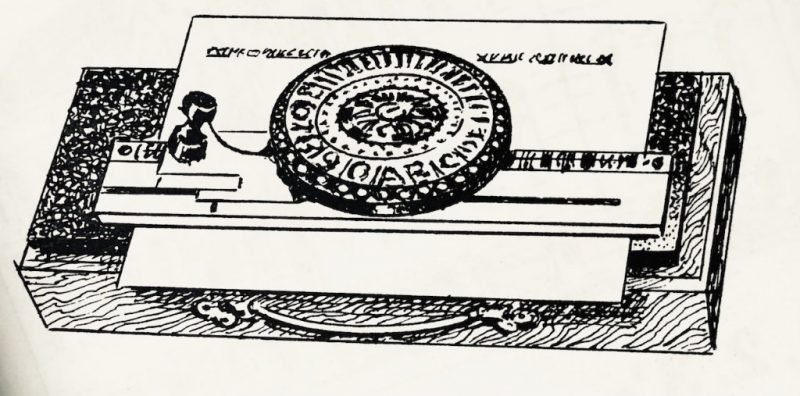
“My Simplex typewriter and a set of drawing instruments were stored in the lower desk compartments. The Simplex was an exceptional, instructive toy. Rubber letters and figures were glued to the bottom of the revolving disc. Two pads supplied the ink from below. You would revolve the letter to an opening in the disc, press down and it would be printed. This, together with a small printing press and gobs of type, perhaps got me started in the work I do today.”
“I kept the room clean and neat, and I think at that time I discovered the saying, ‘A Place for Everything and Everything in its Place.’ I’ve tried to follow this all my life–it makes work so much easier.”
“During the Depression, when my wife Sophie, son Jack and I lived in the upper flat, I turned this room into the headquarters for Jack’s model trail railroad outlet. It had a tunnel through the wall going into a clothes closet. That room served a lot of happy people.”

Love Walters history lesson Thanks and Merry Christmasvto all!
Thanks, Kay! It is fun to revisit Walter’s childhood. Merry Christmas to you as well, from all your Sievers friends!
Carolyn You sure have done a good job with Walter’s memories. He certainly had a wonderful childhood. I wonder how his brother and his sister contributed his early years? I never knew about his writing a book. Did he have it published? He always intrigued me from the first time he was a patient at the hospital, where he was making a drawing of the quilting frame. Sure was a marvelous man. Merry Christmas and a Happy, Healthy New Year. I did not send out some people Christmas cards, those I could email and keep in touch with. You and Ann and Cindra are the only one’s I know from Sievers, and again Happy Holidays.
Love Carol
That was wonderful, Caroline. Such a nice story of Walter’s youth. I missed the first part. I am really looking forward to the next part. Is the information from letters? A diary? Regardless, thank you for sharing the story of Walter. Where was the Sievers farm on Green Bay? Thank you and Merry Christmas, Cheena
Carolyn thanks for sharing this wonderful stories and memories of simpler times.
Hope you have a merry Christmas.
Marg Spain